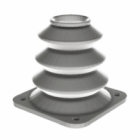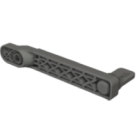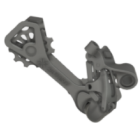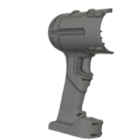What software do 3D printers use
Before a 3D printer can build anything, it needs a set of digital instructions — and those come from specialized software. Whether you’re printing a simple model or a functional prototype, the process always begins on screen. So when people ask, “what is 3D printing software?”, they’re really asking about the tools that turn a digital idea into a printable reality.
In this section, we break down the main types of software involved in the 3D printing workflow, how they interact, and whether you truly need special software for 3D printing.
1. 3D modeling and CAD software
Every print starts with a 3D model. That model can be created from scratch using CAD software (Computer-Aided Design), scanned from a real object, or downloaded from a library.
Popular programs for 3D printing in this category include:
- Fusion 360 – feature-rich and ideal for mechanical design,
- TinkerCAD – beginner-friendly, browser-based,,
- Blender – powerful and free, especially for organic forms
- SolidWorks / Rhino / Siemens NX – professional-grade tools for engineering use.
These tools allow you to control dimensions, tolerances, and geometry, which are crucial for printability. The output is typically an STL or 3MF file — the standard formats used by slicers.
2. Slicing software
Once your model is ready, it must be processed by slicing software — the tool that converts 3D geometry into a layer-by-layer path the printer can follow. This is where you control layer height, supports, infill, print speed, and many other parameters.
Some of the most widely used slicers include:
- Ultimaker Cura – open-source and highly customizable,
- PrusaSlicer – optimized for Prusa printers but widely compatible,
- PreForm – used for SLA printing with Formlabs machines,
- Lychee / ChiTuBox – common choices for resin printers.
If you’re wondering, “do you need special software for 3D printing?”, slicing software is the answer: without it, your printer won’t know how to build the part.
3. Printer control and firmware
While not always visible to the user, 3D printers rely on embedded firmware to interpret G-code and control hardware precisely. Some printers are fully plug-and-play, while others give users access to interfaces like OctoPrint or Klipper — tools that allow remote monitoring, tuning, and advanced control.
For most desktop printers, slicing software exports a G-code file, which is sent to the machine via SD card, USB, or Wi-Fi. For industrial systems, job management often takes place through proprietary control software with integrated material and hardware settings.
Summary of what 3D printing software includes
To summarize, when asking what software do 3D printers use, it’s important to recognize that it’s not just one program — it’s a workflow:
- modeling software to create or edit geometry,
- slicing software to prepare the print file,
- control interfaces to send and manage the print job,
- firmware running on the printer itself.
Each tool has a specific role, and understanding how they work together is key to achieving high-quality, predictable results.
Explore also
- CAD software for 3D printing
- 3D print slicer programs
- 3D printing simulation software
- 3D optimization software
- Open source vs proprietary software
Related categories













